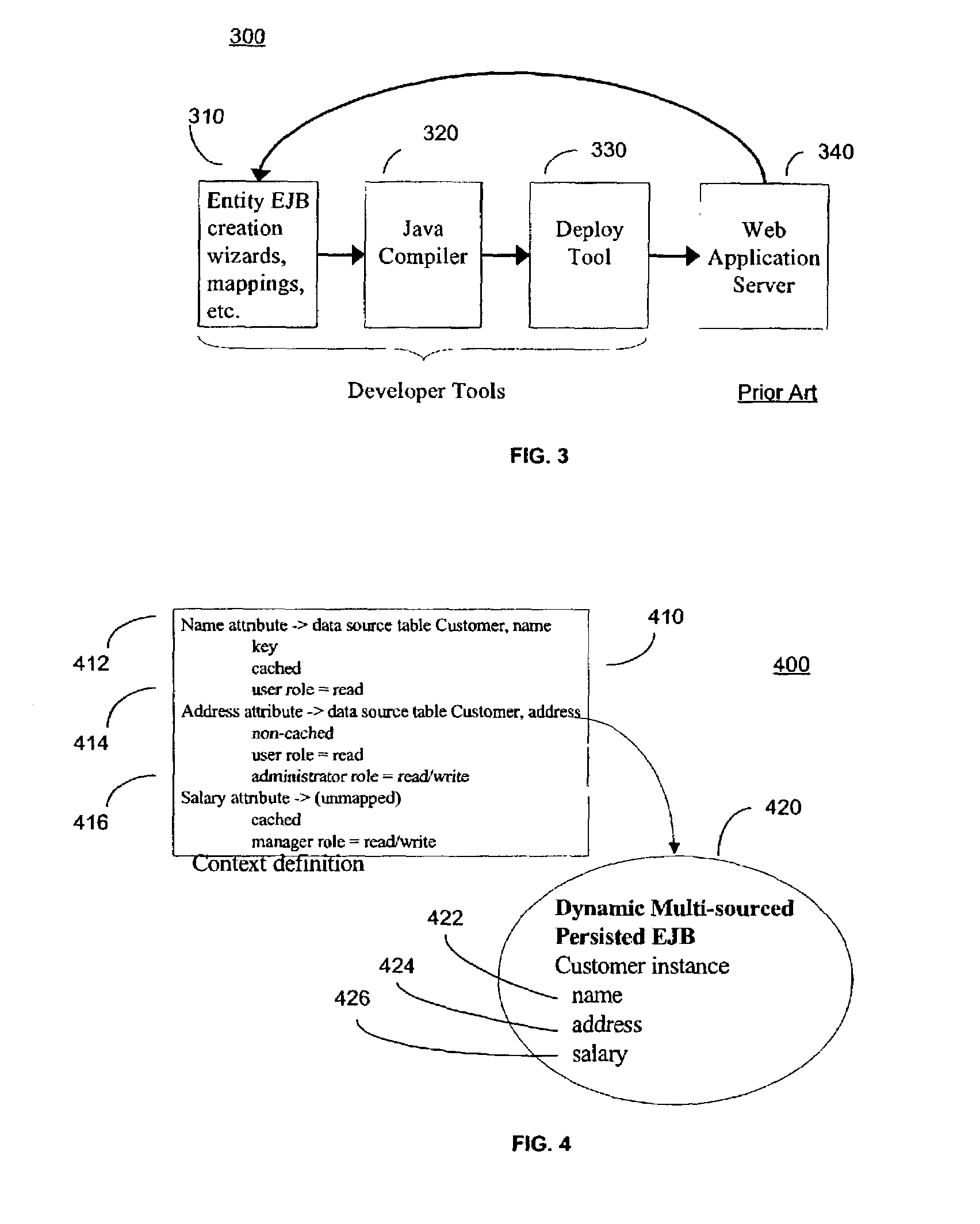System and method for dynamically mapping dynamic multi-sourced persisted EJBs
a dynamic mapping and dynamic mapping technology, applied in the field of electronic business transaction processing, can solve the problems of consuming large amounts of enterprise resources, less than optimal solution to problems, and burden of operating and maintaining a unique and usually non-flexible solution, and achieves the effect of enhancing security of online transaction processing, reducing the cost of installing, operating, enhancing and maintaining the system, and facilitating application to a wide range of business environments
- Summary
- Abstract
- Description
- Claims
- Application Information
AI Technical Summary
Benefits of technology
Problems solved by technology
Method used
Image
Examples
Embodiment Construction
[0026]Turning now to FIG. 1, FIG. 1 shows a three-tiered client-server architecture 100 for Internet applications. This architecture 100 is known to those skilled in the relevant art. Web application servers typically provide the middle tier 120 of a three-tiered architecture for Internet applications. Tier 1, 110 provides the presentation to the end-user of the application. Typically this consists of a web browser such as Netscape, or Internet Explorer interpreting HTML forwarded by a web server in Tier 2, 120 via a Local Area Network (LAN) 140. Tier 2, 120 provides the business logic. This business logic typically is written in Enterprise Java Beans (EJBs), Java Server Pages (JSPs), and servlets. Usually this tier can be broken down into a Web server and an Application server. The Web server JSPs and servlets “serve up” HTML pages to Tier 1, 110. The Application server executes EJBs to respond to JSP and servlet requests. Tier 3, 130 provides data and resources to Tier 2, 120 via ...
PUM
 Login to View More
Login to View More Abstract
Description
Claims
Application Information
 Login to View More
Login to View More - R&D
- Intellectual Property
- Life Sciences
- Materials
- Tech Scout
- Unparalleled Data Quality
- Higher Quality Content
- 60% Fewer Hallucinations
Browse by: Latest US Patents, China's latest patents, Technical Efficacy Thesaurus, Application Domain, Technology Topic, Popular Technical Reports.
© 2025 PatSnap. All rights reserved.Legal|Privacy policy|Modern Slavery Act Transparency Statement|Sitemap|About US| Contact US: help@patsnap.com



